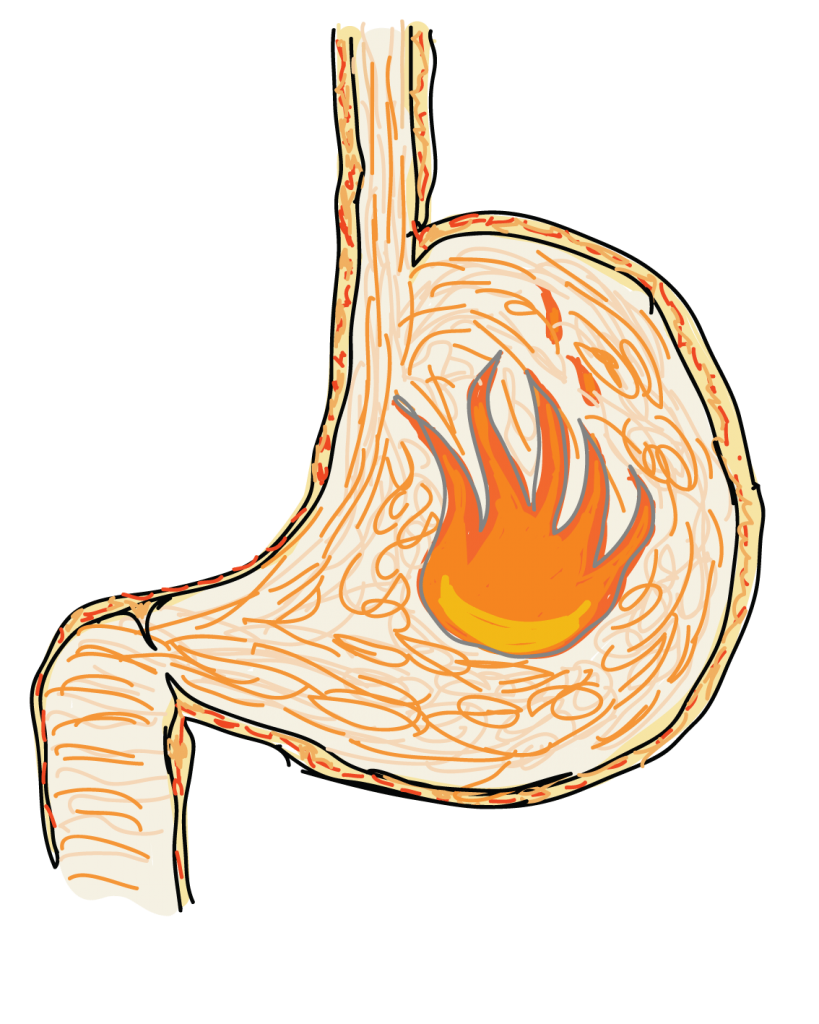13th July 2019, Dr Chee L Khoo
Gastroesophageal acid reflux disease in babies is a common presentation in general practice. Crying, frequent vomiting or regurgitation and sometimes poor weight gain can transform a lovely and cute baby into a monster. Acid suppressants, including proton pump inhibitors (PPIs) and histamine H2-receptor antagonists (H2RAs) are increasingly being prescribed for this debilitating (to both baby and parents) condition. In fact, use in infants quadrupled from 1999 to 2003 and doubled from 2004 to 2008 (1,2). There is a growing body of evidence uncovering several short and long term negative effects of acid suppression both in adults and children. Before we click on the button to prescribe these agents in infants, we need to ponder two questions:
Question 1 – do these agents actually work in these patients?
I know anecdotally, we do have many crying babies whom we (and mum) are desperate to help. Their screams and their arching back tell us that it’s probably reflux oesophagitis. But in a systematic review looking at the efficacy of PPIs in infants, PPIs were more effective in 1 study (compared with hydrolyzed formula), not effective in 2 studies, and equally effective in 2 studies (compared with placebo) for the reduction of gastroesophageal reflux disease (GERD) symptoms (3). For children and adolescents, PPIs were equally effective (compared with alginates, ranitidine, or a different PPI dosage). Overall, it is uncertain whether the use of PPIs reduces crying/distress, visible vomiting/regurgitation or signs and symptoms of GERD based on the I-GERQ-R questionnaire in infants with GERD when compared with placebo.
Sometimes, we might use a PPI as a diagnostic test. The same study above looked at 5 RCTs of PPIs in preterm and full-term infants with treatment period between 2-4 weeks. None of the trials show symptom reduction over placebo regardless of the trial length. Based on these results, a short trial of a PPI is also not recommended as a diagnostic test for infants.
When they looked at trials used to assess H2RAs have had similar results, with no significant reduction in symptoms of crying in infants when compared with placebos.
Question 2 – should we discuss these negative effects with the parents?
We are increasingly hearing about complications relating to chronic use of PPIs in adults. These possible adverse effects of PPIs include increased risk of chronic kidney disease, bone fracture, dementia, small intestinal bacterial overgrowth, enteric infection, and micronutrient deficiency (4).
Paediatric acid suppression has been linked with increased risk for necrotising enterocolitis, blood borne infection, pneumonia, and gastroenteritis (5). In a recent study, use of both H2RAs and PPIs in the first 2 years of life was linked to obesity in older children (6).
In a cohort of 851 631 children born between 2001 and 2013 and followed up for 2 years, 11% of them were prescribed acid suppression therapy (0.9% PPI, 8% H2RA and 1% both) (7). Infants prescribed acid suppression therapy (AST) had an earlier median first fracture age (3.9 vs 4.5 years). After adjustment, increased fracture hazard was associated with PPI use (21%) and PPI and H2RA use (30%), but not H2RA use alone. Longer duration of AST treatment and earlier age of first AST use was associated with increased fracture hazard.
Previous studies have looked at bone health in children on PPIs but the results were conflicting. A small study of 34 children (ages 5–9 and 12–15 years) revealed that PPIs were not associated with alterations in biochemical indicators of bone turnover (8). In another larger study, PPI use was associated with fracture in young adults (ages 18–24 years) but not in children (ages 4–18 years) (9). In yet another study, first-year PPI use may be associated with an increased fracture rate during the first 5 years of life, although they did not examine the effect of age at time of initiation or duration of exposure (10).
AST use in infants have to be weighed carefully. There are many potential adverse effects including increased risk of fracture in children. Should we have a conversation with the parents prior to commencing AST?
References:
- Illueca M, Alemayehu B, Shoetan N, Yang H. Proton pump inhibitor prescribing patterns in newborns and infants. J Pediatr Pharmacol Ther. 2014;19(4): 283–287
- Barron JJ, Tan H, Spalding J, Bakst AW, Singer J. Proton pump inhibitor utilization patterns in infants. J Pediatr Gastroenterol Nutr. 2007;45(4):421–427
- van der Pol RJ, Smits MJ, van Wijk MP, et al. Efficacy of proton-pump inhibitors in children with gastroesophageal reflux disease: a systematic review. Pediatrics 2011; 127:925-935.
- Vaezi MF, Yang YX, Howden CW. Complications of proton pump inhibitor therapy. Gastroenterology. 2017;153(1): 35–48
- Slaughter JL, Stenger MR, Reagan PB, Jadcherla SR. Neonatal histamine-2 receptor antagonist and proton pump inhibitor treatment at United States children’s hospitals. J Pediatr. 2016;174:63–70.e3
- Stark CM, Susi A, Emerick J, Nylund CM. Antibiotic and acid-suppression medications during early childhood are associated with obesity. Gut. 2019;68(1): 62–69
- Malchodi L, Wagner K, Susi A, et al. Early Acid Suppression Therapy Exposure and Fracture in Young Children. Pediatrics. 2019;144(1):e20182625.
- Kocsis I, Arató A, Bodánszky H, et al. Short-term omeprazole treatment does not influence biochemical parameters of bone turnover in children. Calcif Tissue Int. 2002;71(2):129–132
- Freedberg DE, Haynes K, Denburg MR, et al. Use of proton pump inhibitors is associated with fractures in young adults: a population-based study. Osteoporos Int. 2015;26(10):2501–2507
- Wagner K, Wagner S, Susi A, Gorman G, Hisle-Gorman E. Prematurity does not increase early childhood fracture risk. J Pediatr. 2019:207:148–153
